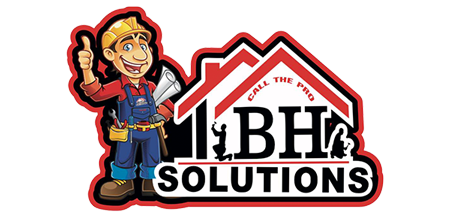
Facing water from your ceiling can feel overwhelming, yet knowing the correct roof leak emergency steps keeps you calm and focused. Acting quickly prevents worsening damage while protecting your belongings. Using smart methods like temporary tarping and quick containment ensures control until professionals arrive. Additionally, document every detail with insurance photos to support future claims. Following this plan helps turn a stressful moment into a well-managed situation. If you ever need professional help, reach out through Contact our experts at BH Solutions USA for reliable roofing guidance.
Assess the Leak Severity
Start by observing how much water enters your home. Is it steady or slow? Place a bucket beneath the drip and monitor. This step is among the first roof leak emergency steps to evaluate urgency. Mark the bucket’s fill line to track progress over time.
Even a small, persistent leak can cause significant structural harm. Over hours, it may soak insulation and wood. Keep notes on flow rate and timing. Accurate information assists both contractors and insurers when you explain the situation later.
Locate the Source of the Leak
Finding the leak’s entry point feels like detective work. Begin by checking the ceiling directly above the drip. Look for discoloration, bulges, or sagging paint—each clue indicates trouble. If possible, access the attic with a flashlight. Wet insulation or darkened rafters often reveal where repairs are required.
If the attic offers no clues, safely inspect from outside. Check flashing, valleys, vents, and skylights for cracks or gaps. Narrowing the cause helps you plan proper fixes and define your next roof leak emergency steps effectively.
Take Immediate Action to Contain the Water
Once you’ve located the leak, act quickly to minimize water spread. Move furniture and valuables away from affected spots. Lay towels or plastic sheets over flooring to stop staining. Using buckets & containment beneath drips prevents further harm and allows cleanup simplicity.
- Place sturdy containers that won’t tip easily.
- Check and empty them regularly.
- Replace soaked towels promptly to avoid floor damage.
- Monitor the leak every hour during heavy rain.
By managing water flow early, you gain valuable time before repair teams arrive and strengthen your overall roof leak emergency steps.
Document the Damage for Insurance Purposes
Before starting repairs, record every affected area. Take clear images of stains, warped walls, or wet insulation. Label each shot with time and place to properly document damage. Keep a written log describing when the leak began and what actions you took.
Collect receipts for tarps, towels, or containers. When you submit insurance photos with detailed notes, claim processing becomes faster and more accurate. Organized evidence demonstrates your commitment to preserving your property responsibly.
Contact a Professional Roofer
After securing the area, it’s essential to call a roofer for inspection. Look for licensed professionals with proven expertise. Describe your observations clearly, including severity and steps you’ve taken. Compare several quotes before confirming service.
Reputable experts evaluate hidden damage, discuss costs transparently, and guide you through each roof leak emergency steps phase. For dependable service, visit BH Solutions USA Home Page to request professional assessment and timely repair assistance.
Temporary Solutions: Tarping and Bucket Placement
While awaiting help, apply temporary tarping to block rain intrusion. Use a durable tarp extending beyond damaged zones. Secure it with ropes or nails and inspect frequently for movement. This temporary fix reduces interior exposure and safeguards possessions.
- Ensure the tarp slopes outward to redirect water.
- Check attachment points after strong wind.
- Keep containers underneath for additional buckets & containment.
- Replace or tighten if leaks persist.
This combination limits spread, buying precious time for permanent repairs. Quick thinking supports overall roof leak emergency steps success.
Understand the Potential Causes of Roof Leaks
Leaking roofs stem from various factors, including aging materials and severe storms. Shingles lose flexibility and crack, allowing water entry. Damaged flashing or clogged gutters further worsen issues. Recognizing triggers forms part of efficient roof leak emergency steps planning.
Inspect chimney areas and skylight edges regularly. Tree branches rubbing the roof surface may open small gaps. Preventing these conditions strengthens your home’s resilience and reduces future leak probability.
Preventive Maintenance Tips to Avoid Future Leaks
Preventing leaks begins with consistent care. Regular roof inspections and cleaning guard against surprise drips. Create a seasonal maintenance checklist to ensure protection remains steady throughout the year.
- Inspect shingles twice yearly for cracks or loss of granules.
- Clean gutters to keep water flowing properly.
- Trim tree branches brushing against roofing surfaces.
- Check and reseal flashing around vents and chimneys.
Implementing these habits ensures your roof leak emergency steps are rarely needed, keeping your household dry and secure.
Frequently Asked Questions
What should I do first after spotting a roof leak?
Begin immediate containment, then follow structured roof leak emergency steps like moving valuables, collecting water, and documenting damage carefully.
Can I repair the leak myself temporarily?
Yes, using temporary tarping provides short-term protection. However, professional repair ensures lasting results and safety.
Why are photos so important for insurance?
Taking insurance photos creates verified proof of impact. Clear images speed claim approval and validate your repair needs.
When should I call a roofer?
You should call a roofer immediately after securing your home. Quick consultation prevents deeper damage and delays.
How can I minimize future leak risks?
Commit to twice-yearly inspections, cleaning gutters, and prompt fixes. Prevention supports your long-term roof leak emergency steps strategy.
Ensuring Your Home’s Safety Amidst Roof Leaks
- Assess leaks and contain water fast.
- Record evidence for claims before touching repairs.
- Contact experts for accurate evaluation and service.
- Maintain seasonal inspections to prevent recurrences.
Handling a roof issue calmly defines effective roof leak emergency steps. By documenting, containing, and addressing leaks early, you secure your property and peace of mind. Acting promptly with expert support ensures a lasting, reliable solution to future challenges.
